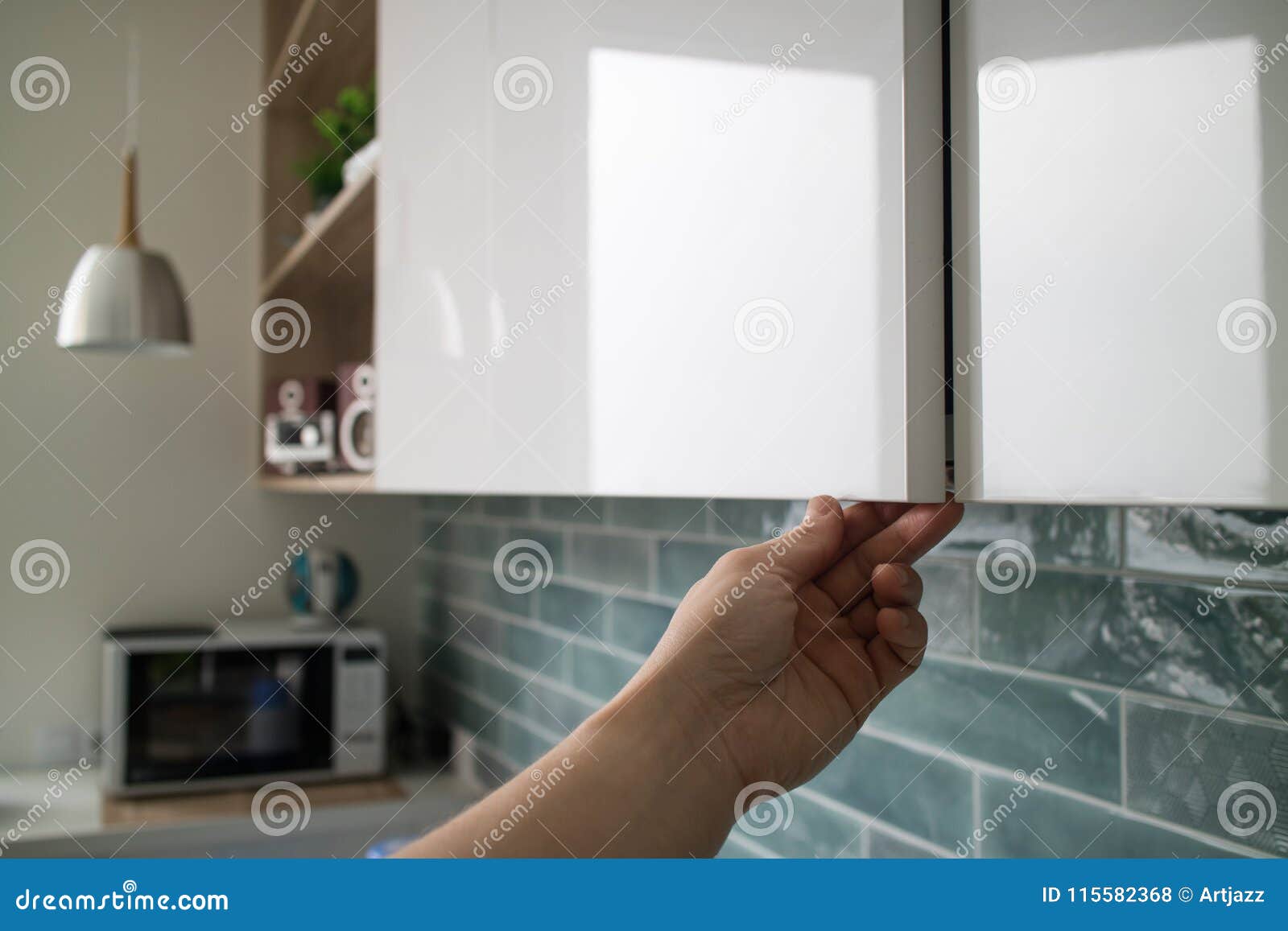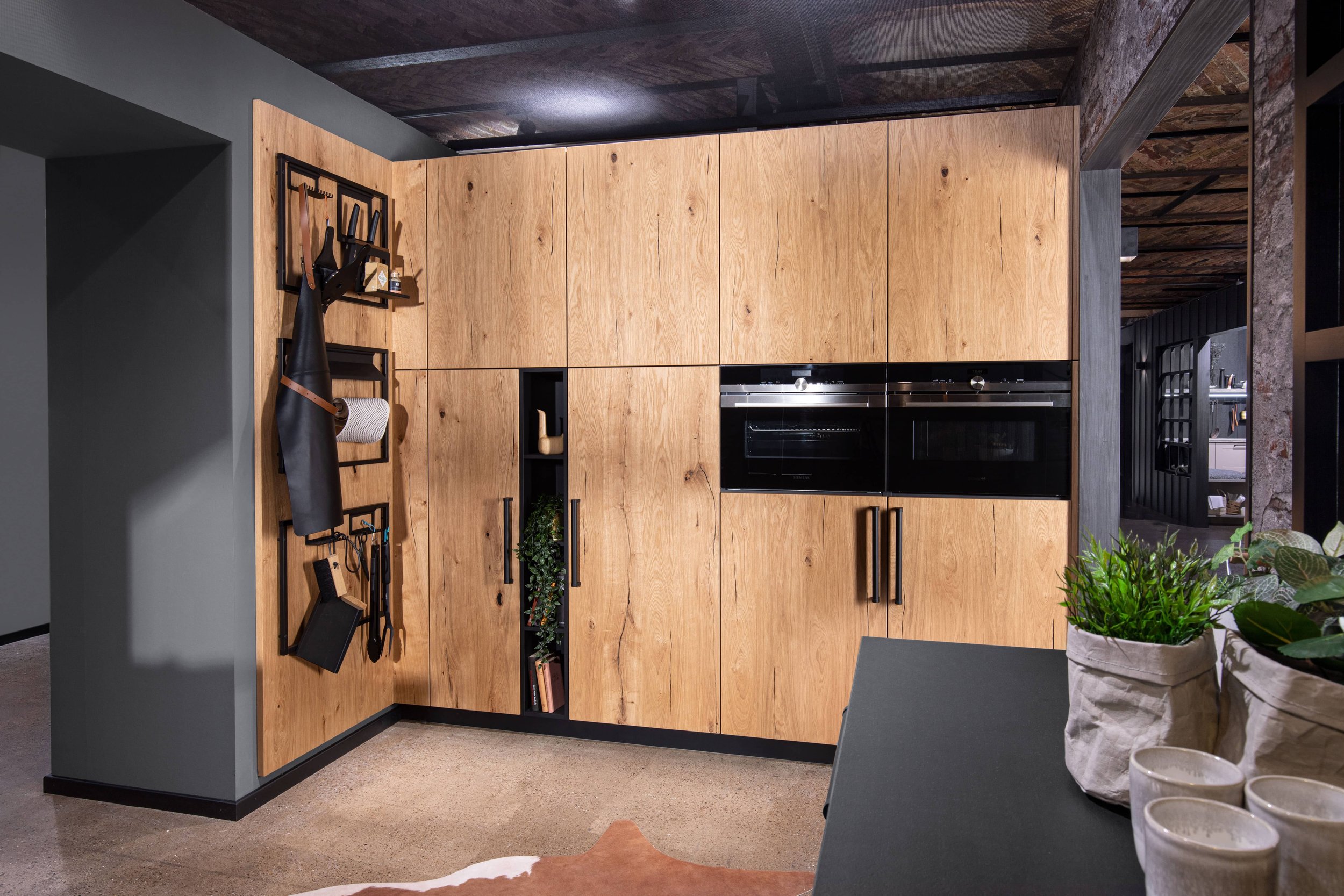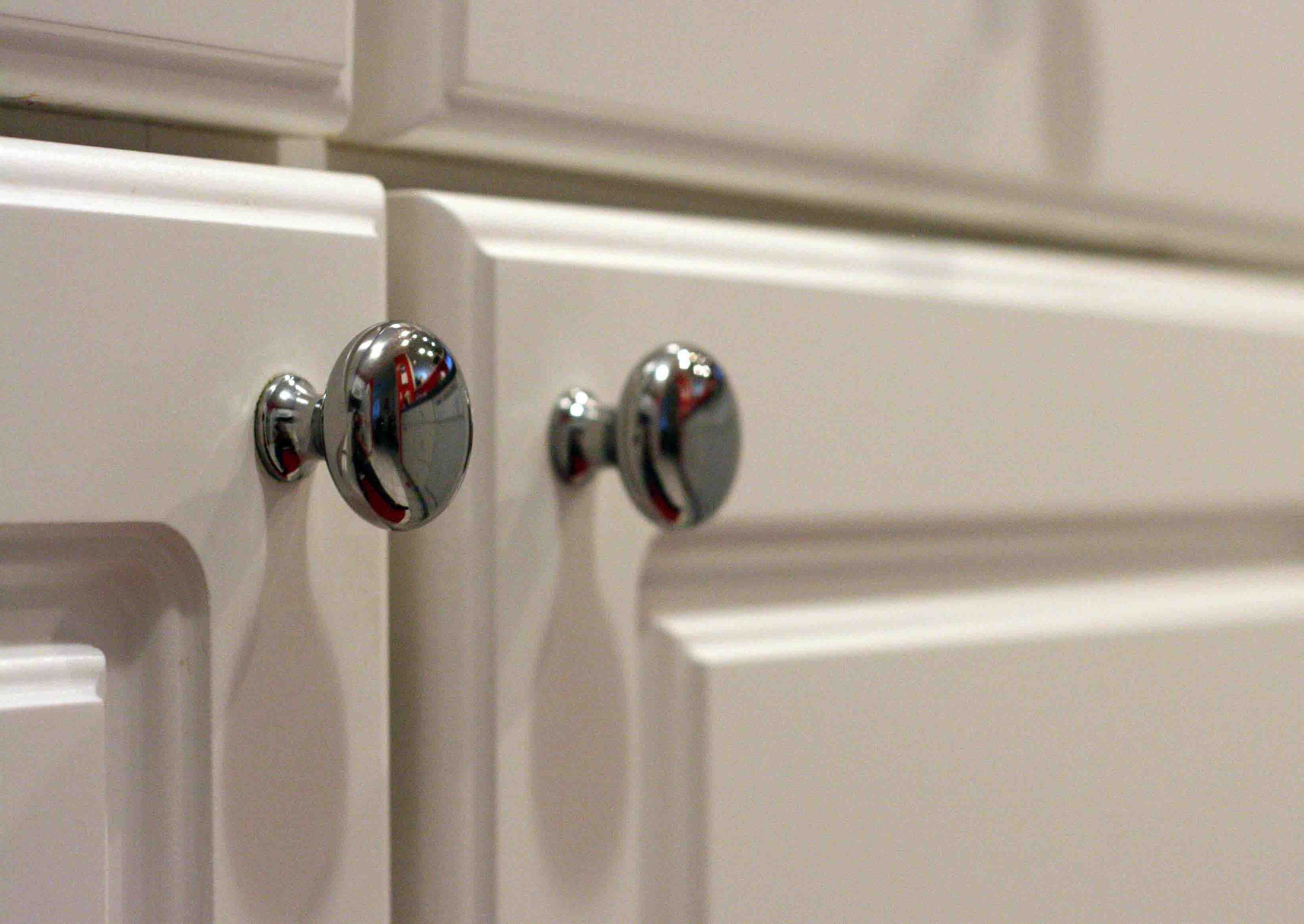Styles and Designs of Cabinet Doors Without Hardware

Cabinet doors without visible hardware offer a sleek, minimalist aesthetic, seamlessly integrating with modern kitchen and bathroom designs. The absence of knobs and handles contributes to a clean, uncluttered look, enhancing the overall sophistication of the space. Achieving this seamless integration, however, requires careful consideration of both the door’s design and the concealed opening mechanism.
Five Distinct Styles of Handleless Cabinet Doors
The following table details five distinct styles of handleless cabinet doors, each employing a different mechanism for opening and closing. The choice of style depends on factors such as the overall design aesthetic, the type of cabinetry, and the desired level of functionality.
| Style Name | Opening Mechanism | Material Suitability | Aesthetic Appeal |
|---|---|---|---|
| J-Pull Groove | A recessed groove along the edge of the door allows for fingertip grip and opening. | Wood, MDF, Laminate | Clean, minimalist; suitable for modern and contemporary styles. |
| Push-to-Open Mechanism | A spring-loaded mechanism integrated into the cabinet frame or door edge triggers opening when pressed. | Wood, MDF, High-gloss Acrylic | Sleek, seamless; ideal for minimalist and handleless designs. |
| Tip-On Hinge System | A gentle touch to the door activates a hinge mechanism, causing the door to open. | Wood, MDF, Melamine | Discreet, almost invisible; excellent for a truly seamless look. |
| Recessed Handle | A small, recessed handle is integrated into the door’s surface, providing a subtle grip for opening. | Wood, Metal, Glass | Subtle elegance; offers a balance between minimalist design and functionality. |
| Full Overlay with Integrated Grip | A slight lip or bevel along the door edge provides a grip for opening, completely hidden when closed. | Wood, MDF, Thermofoil | Modern and clean; allows for a completely flush surface when closed. |
Minimalist Shaker-Style Cabinet Door Without Handles
Imagine a Shaker-style cabinet door, crafted from smooth, light oak. The door’s frame is subtly defined by a recessed panel, creating a clean, uncluttered look. The absence of any visible hardware contributes to the door’s minimalist aesthetic. The grain of the oak is subtly visible, adding a touch of natural warmth to the otherwise austere design. The door sits flush against the adjacent cabinetry, creating a seamless and integrated look. The edges are perfectly aligned, and the overall impression is one of quiet elegance and understated sophistication.
Three Recessed Pull or Push-to-Open Mechanisms for Frameless Cabinet Doors
Three distinct recessed pull or push-to-open mechanisms can be effectively integrated into frameless cabinet doors. These mechanisms enhance functionality while maintaining a seamless aesthetic.
- Mechanism 1: Linear Recessed Grip. A narrow, horizontal groove is milled into the door’s surface, providing a subtle finger grip. This groove is approximately 1/4 inch wide and 1/2 inch deep, offering a comfortable and discreet opening mechanism. The groove is seamlessly integrated into the door’s design, maintaining a clean and minimalist aesthetic.
- Mechanism 2: Push-to-Open with Integrated Damper. This mechanism utilizes a concealed spring-loaded system within the cabinet frame. A gentle push activates the opening mechanism, and a built-in damper ensures a slow and quiet closure. The mechanism is entirely hidden, leaving the door’s surface completely smooth and unblemished. The damper is crucial for preventing slamming and extending the life of the mechanism.
- Mechanism 3: Magnetic Catch with Pressure-Sensitive Opening. This mechanism relies on a magnetic catch to hold the door closed. A slight pressure on the door’s surface releases the magnetic hold, allowing the door to open. This system requires precise calibration to ensure a smooth and reliable opening and closing action. The magnetic catch is completely concealed, maintaining the clean lines of the frameless cabinet design.
Installation and Functionality of Hardware-less Cabinet Doors: Cabinet Doors Without Hardware
.jpg)
The whisper of the cabinet door opening, a silent ballet of perfectly aligned mechanisms, hints at a world beyond the mundane. Installing frameless cabinet doors with push-to-open mechanisms is a journey into the subtle elegance of unseen engineering, a dance between precision and functionality. The seemingly effortless movement belies the intricate interplay of components working in perfect harmony. Let’s unravel the mystery.
Cabinet doors without hardware – The installation process, while seemingly straightforward, requires meticulous attention to detail. A slight misalignment can disrupt the delicate balance, leading to frustrating results. Patience and precision are key to achieving a seamless, almost magical, outcome.
Installing Frameless Cabinet Doors with Push-to-Open Mechanisms
The following steps Artikel the installation of frameless cabinet doors employing a push-to-open mechanism. Accurate measurements and careful alignment are paramount for a successful installation, ensuring smooth operation and a sleek, integrated look.
- Preparation: Gather necessary tools: measuring tape, pencil, level, drill, screwdriver (Phillips and flathead), safety glasses, and appropriate drill bits. Materials include frameless cabinet doors, push-to-open hinges, and any necessary mounting screws. Ensure the cabinet frames are properly prepared and level.
- Hinge Placement: Carefully measure and mark the hinge locations on both the cabinet door and the cabinet frame. Accuracy is crucial here; slight errors will lead to misalignment and potentially hinder functionality. Use a level to ensure vertical and horizontal alignment.
- Hinge Installation: Attach the hinges to the cabinet door and frame using the provided screws. Tighten the screws securely, but avoid over-tightening which can damage the wood. Ensure the hinges are flush against the surfaces.
- Door Alignment: Carefully install the door onto the hinges. Adjust the hinges as needed to ensure the door aligns perfectly and opens and closes smoothly. Minor adjustments might be required for optimal functionality.
- Mechanism Adjustment: Depending on the specific push-to-open mechanism, there might be further adjustments needed to fine-tune the sensitivity and responsiveness of the opening and closing action. Consult the manufacturer’s instructions for precise guidance.
- Testing: Test the functionality of the door, ensuring it opens and closes smoothly and silently with a gentle push. Adjust the hinges or mechanism as needed until the desired operation is achieved.
Types of Hinges Used in Hardware-less Cabinet Systems
Several hinge types facilitate the seamless operation of hardware-less cabinets. Each type offers a unique balance of durability, adjustability, and ease of installation, impacting both the aesthetic and functional aspects of the finished product.
| Hinge Type | Durability | Adjustability | Ease of Installation |
|---|---|---|---|
| Concealed European Hinge | High | High | Moderate |
| Soft-Close Hinge | High | Moderate | Moderate |
| Self-Closing Hinge | Moderate | Low | Easy |
Push-to-Open Mechanisms versus Other Hidden Hardware Options
The choice between push-to-open mechanisms and other hidden hardware options, such as touch-latch systems or magnetic catches, depends on several factors. Each system offers a unique blend of convenience, longevity, and cost, impacting the overall experience and aesthetic appeal.
Push-to-open mechanisms are generally known for their ease of use and clean aesthetic. They are durable and reliable, offering a long lifespan with minimal maintenance. However, they can be slightly more expensive than other hidden hardware options. Touch-latch systems, while sleek, might require more precise calibration and are potentially more prone to malfunction. Magnetic catches, while simple and inexpensive, might not provide the same level of smooth, quiet operation.
Considerations for Choosing Hardware-less Cabinet Doors

The decision to embrace hardware-less cabinet doors is a significant one, impacting both the aesthetic and functional aspects of your kitchen or bathroom. A careful evaluation of the advantages and disadvantages is crucial before committing to this design choice. This assessment should encompass factors such as the overall design scheme, budget constraints, maintenance expectations, and the desired level of durability.
Advantages and Disadvantages of Hardware-less Cabinet Doors
The allure of seamless, minimalist design often draws homeowners to hardware-less cabinets. However, this choice is not without its trade-offs. Understanding both the benefits and drawbacks is essential for informed decision-making.
- Aesthetic Appeal: Hardware-less cabinets create a clean, modern look, enhancing the sense of spaciousness and sophistication. The absence of knobs and pulls allows the cabinetry to blend seamlessly into the surrounding design, emphasizing the beauty of the door itself and the overall room aesthetics.
- Cost Considerations: While the initial cost of hardware-less cabinets might seem comparable, the specialized mechanisms required can increase the overall expense. The complexity of the push-to-open or touch-to-open systems often translates into higher manufacturing and installation costs.
- Maintenance and Durability: Hardware-less systems, especially push-to-open mechanisms, generally require less maintenance than traditional hardware. However, the mechanisms themselves can be more prone to failure if not installed and used correctly. Durability hinges on the quality of the chosen mechanism and its proper integration into the cabinet.
Case Studies of Hardware-less Cabinet Integration
The successful integration of hardware-less cabinets transcends specific design styles; their adaptability is a key strength.
- Case Study 1: Modern Minimalist Kitchen. Imagine a sleek, white kitchen with handleless cabinets featuring a sophisticated push-to-open mechanism. The doors are made of high-gloss lacquered MDF, reflecting light and creating an airy feel. The absence of handles accentuates the clean lines and minimalist aesthetic, perfectly complementing the stainless steel appliances and minimalist countertops. The overall effect is one of sophisticated simplicity and understated elegance.
- Case Study 2: Traditional Shaker-Style Bathroom. In a more traditional setting, consider a bathroom with shaker-style cabinets crafted from light oak. Here, a touch-to-open system is seamlessly integrated. The slightly recessed cabinet doors maintain a classic profile, while the hidden mechanism prevents a jarring clash with the traditional design. The subtle integration of technology enhances functionality without compromising the overall aesthetic.
- Case Study 3: Rustic Farmhouse Kitchen. Picture a rustic farmhouse kitchen with cabinets made from reclaimed wood. The cabinets feature a unique, integrated groove system for opening. This system subtly replaces traditional handles, perfectly complementing the natural wood grain and the overall rustic charm of the space. The use of natural materials combined with a carefully integrated opening system creates a harmonious and functional kitchen design.
Rewritten Article on Hardware-less Cabinets, Cabinet doors without hardware
Hardware-less cabinets offer a compelling design solution for modern homes. Their seamless appearance contributes to a clean, uncluttered aesthetic, maximizing visual space. However, the choice involves careful consideration of several factors. The cost of specialized mechanisms can be higher than traditional hardware, and while maintenance is generally less, the mechanisms themselves require careful installation and use to ensure longevity. Successful integration depends on careful planning and the selection of a mechanism appropriate for the design style and intended use. Examples include sleek, modern kitchens where handleless designs accentuate minimalist aesthetics, traditional settings where integrated systems maintain a classic look, and rustic spaces where innovative opening mechanisms complement natural materials. Each project requires a thorough assessment of the design, budget, and long-term maintenance implications.
